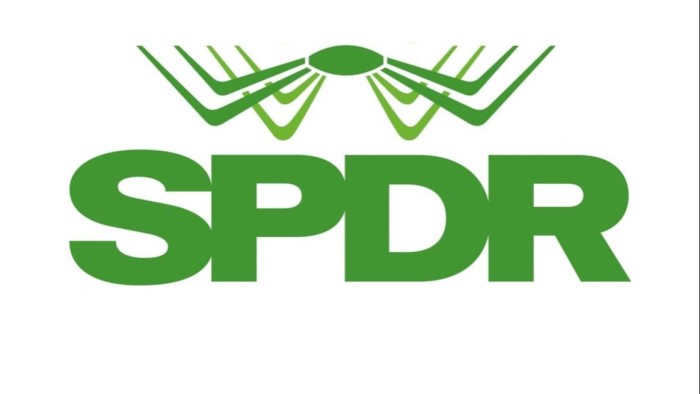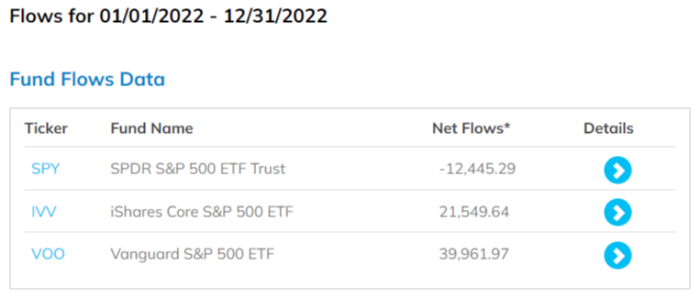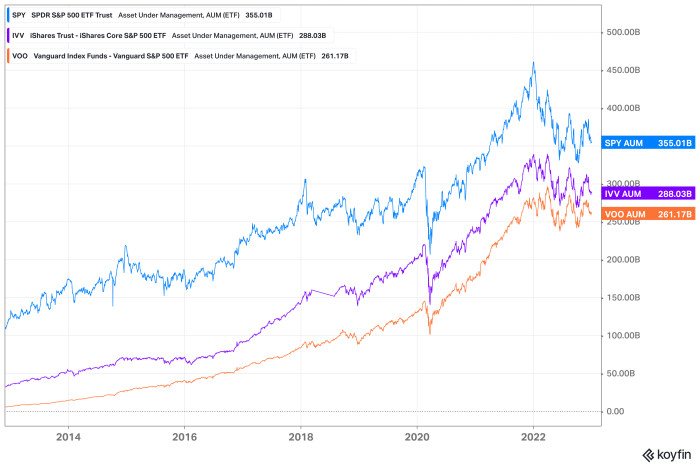Sun setting on SPY supremacy

Roula Khalaf, Editor of the FT, selects her favourite stories in this weekly newsletter.
Most of the 2023 outlook reports are fairly unimaginative and follow a predictable pattern. Central banks will keep hiking, recessions will follow, inflation will slow, markets will fall and then rise in the second half.
But here’s a genuinely interesting prediction from The ETF Educator’s Nate Geraci: State Street’s pioneering flagship ETF — the $355bn SPDR S&P 500 ETF Trust — will be supplanted by rivals from Vanguard and BlackRock by the end of the year.
Here’s Geraci:
Later this month, the US ETF industry turns 30 years old. The first US-listed ETF, the SPDR S&P 500 ETF (SPY), launched on January 22nd, 1993. The ETF that started it all never looked back and currently sits atop the ETF throne with $353 billion in assets. The next two largest ETFs also happen to track the S&P 500. The iShares Core S&P 500 ETF (IVV) holds $288 billion in assets and the Vanguard S&P 500 ETF (VOO) has $279 billion. My first prediction is that one of these ETFs (my money is on VOO) captures SPY’s ETF crown by the end of the year.
Given the AUM discrepancy — SPY still manages a chunky $68bn more than its nearest rival, BlackRock’s IVV at pixel time — that may seem aggressive.
But as Geraci points out, last year’s flow data was pretty clear about the direction of travel.

And here’s what the past decade looks like in chart form. 2023 might be touch and go, but SPY’s supremacy looks like it will fall eventually.

SPY was not quite the first-ever ETF (due to a slow regulatory approval process in the US, Canada’s TIPS pipped it by nearly three years) but it is unquestionably the industry’s Helen of Troy — the fund that launched a thousand ETFs.
It has maintained its lead as the biggest ETF (albeit not the biggest investment fund; that honour belongs to Vanguard’s $1.2tn Total Stock Market Index Fund) at least partly thanks to a giant ecosystem of derivatives and trading that has also sprung up around it.
SPY is one of the most actively-traded equity instruments in the world, and liquidity begets liquidity. While its annual fee of 9.45 basis points is much higher than the 3 bps that both Vanguard’s VOO and BlackRock’s IVV charge, the other two cannot (yet) rival the prototype ETF’s bid-ask spreads and associated web of derivatives built on top of it. It is as much a trading instrument as it is an investment fund.
Geraci just doesn’t think this matters when it comes to fund flows right now.
SPY is the undisputed liquidity king and won’t be ceding that crown anytime soon. However, it acts more like the court jester when it comes to fees . . .
. . . My prediction is that money will continue flowing out of expensive, underperforming active mutual funds and find its way into the cheapest, core beta exposure out there. That means IVV and VOO, not SPY. I’ll feel even more confident in this prediction if markets have another tough year, where further drawdowns will unlock opportunities for investors with taxable accounts to switch out of suboptimal investment vehicles and move into ETFs. Vanguard, in particular, usually cleans-up in these environments.
SPY will always be the granddaddy of ETFs, but even a respected king has to pass the crown eventually.
Comments